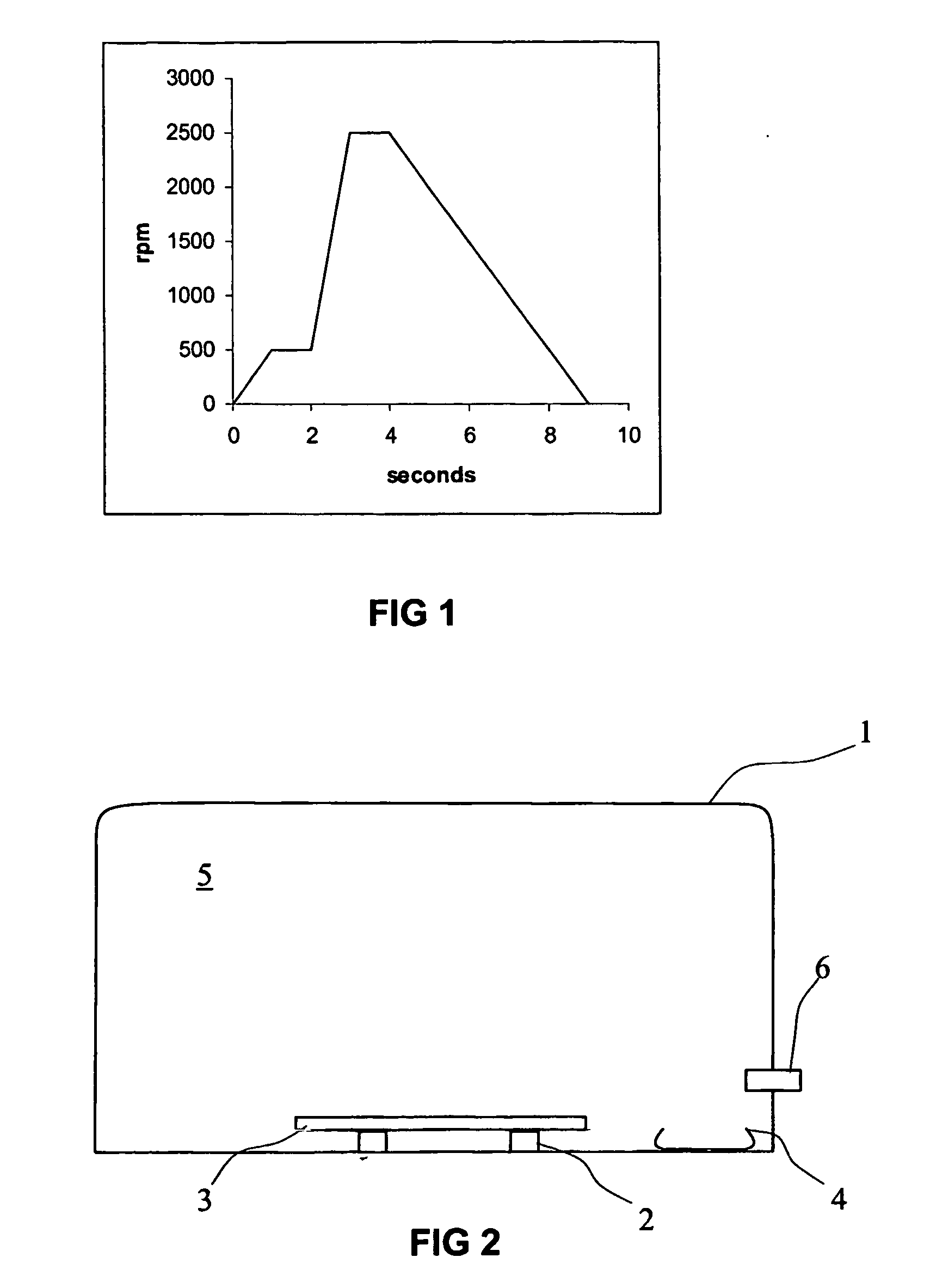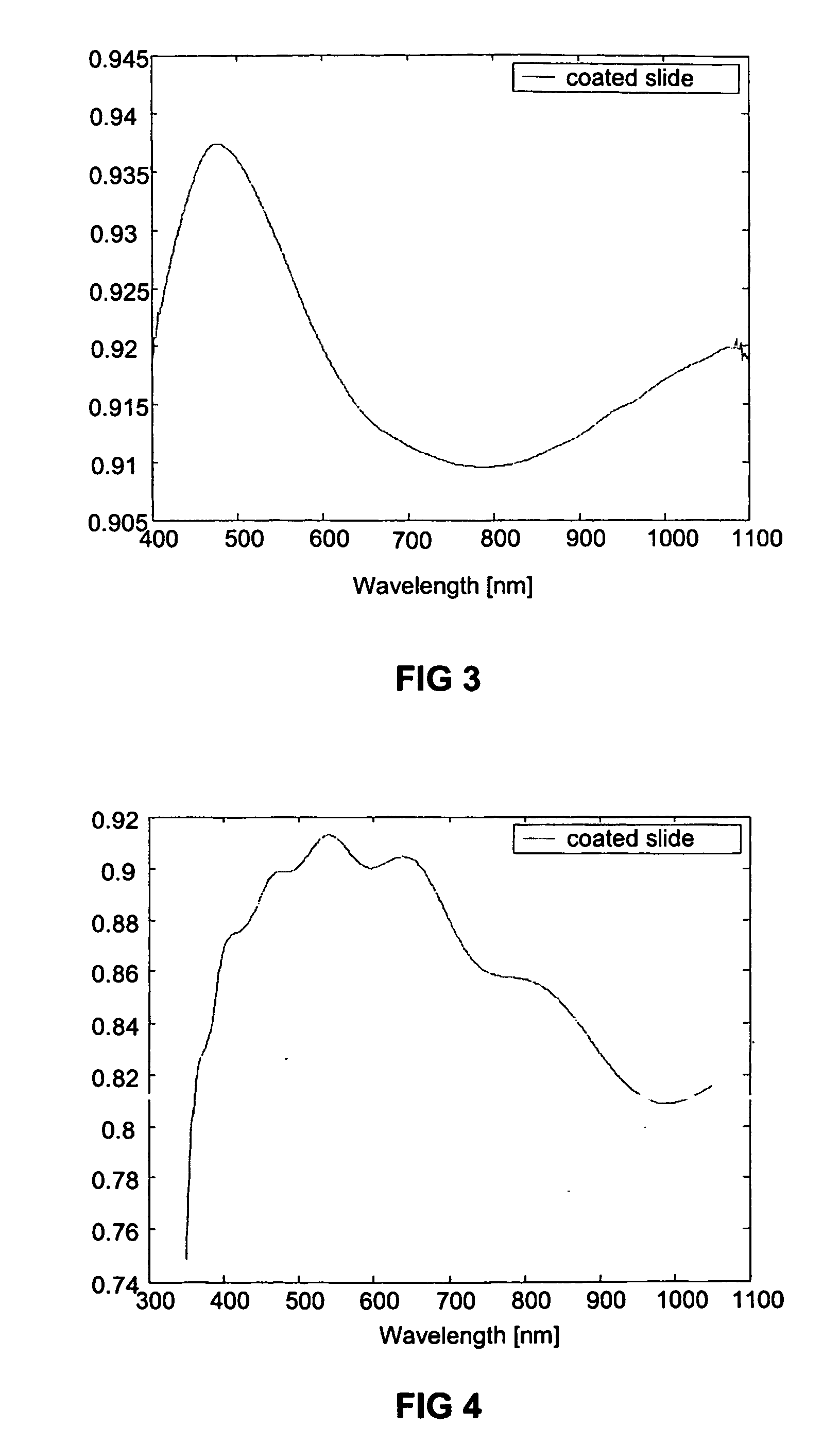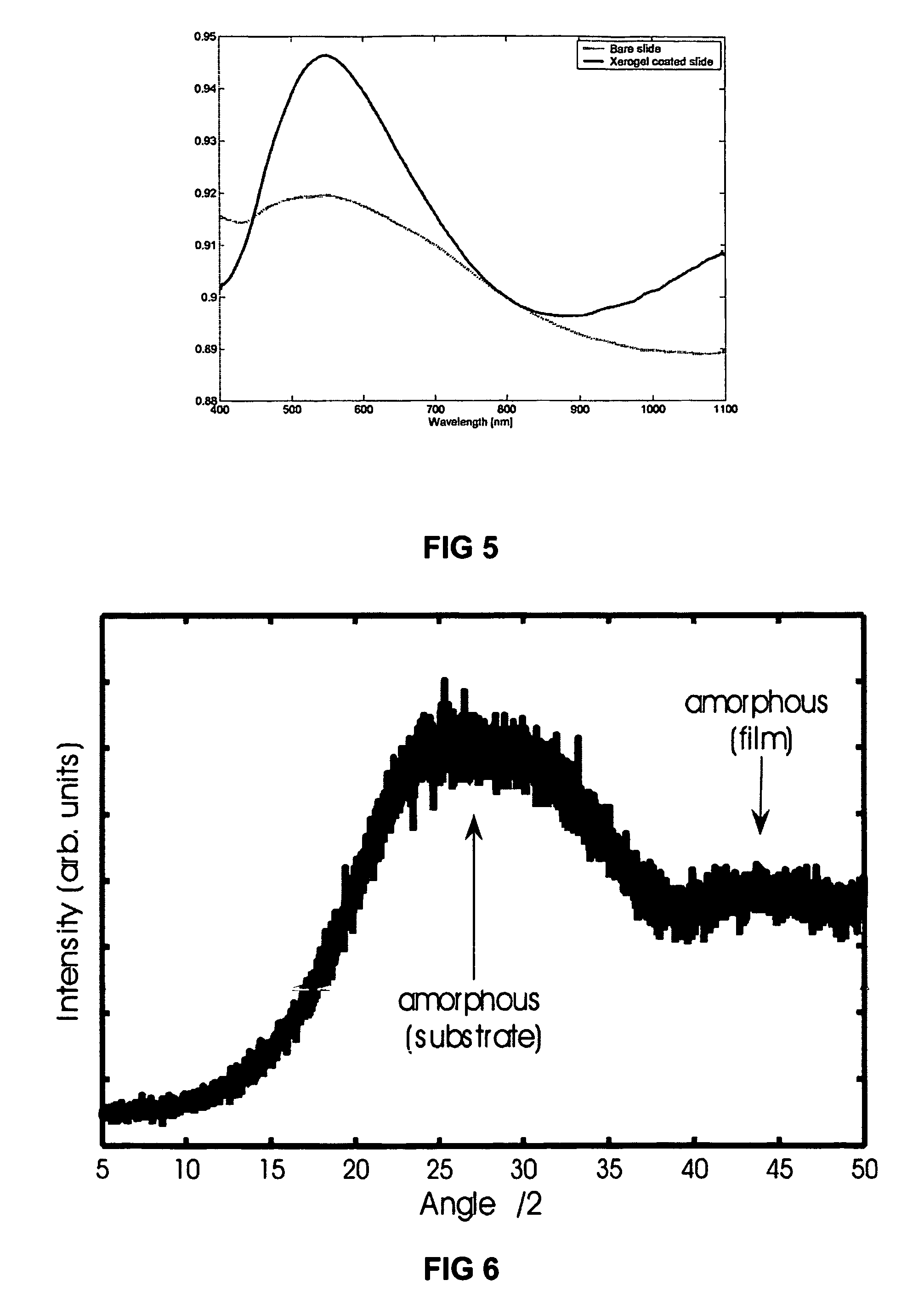Silica films and method of production thereof
a technology of thin films and silica, applied in the direction of superimposed coating process, liquid/solution decomposition chemical coating, therapy, etc., can solve the problems of high cost, easy damage to films produced by sol-gel processes, and high cost of multi-step processes. , to achieve the effect of high cross-linked
- Summary
- Abstract
- Description
- Claims
- Application Information
AI Technical Summary
Benefits of technology
Problems solved by technology
Method used
Image
Examples
example 1
[0042] 10 ml of methyl-silicate-51 (comprising silicic acid tetramethyl ester homopolymer >94%, tetramethoxysilane <3%, methanol <3%) {supplied by COLCOAT CO. LTD. 3-28-6 Omorinishi, Ota-ku, Tokoyo 143-0015, Japan} is added to solution of 60 ml ethanol or methanol, and 1 ml water to form a silica precursor formulation.
[0043] The silica precursor formulation may comprise any alcohol that creates dispersed droplets throughout the silica precursor formulation and facilitate the formation of pores in the final film. Alcohols include but are not limited to: ethanol, methanol, iso-propyl alcohol, butanol, pentanol and certain other polyols such as ethylene glycol.
[0044] The precursor solution is applied to a substrate, in this example a glass slide, by spin coating at a spreading time=1 s, spreading speed=500 rpm, ramp=500 rpm / s, spin time=1 s, spin speed=2500, ramp=2500 rpm / s. A graph of the spin profile is shown in FIG. 1.
[0045] It will be appreciated that spin deposition conditions ...
example 2
[0065] Another silica film was formed in a manner similar to Example 1. To compare the features of the silica film of this example with that of its substrate, a glass slide, UV-visible optical transmission spectra was recorded for both a coated substrate and uncoated substrate, shown in FIG. 5.
[0066] Ordinarily, ˜4% of incident light is reflected from each glass-air interface, leading to a normal transmission of ˜92% for an uncoated glass substrate. FIG. 3 shows the increase (˜94.6%) in transmission that can be achieved by coating one side of a glass substrate with a low refractive index film produced by the new process. Theoretically, a thin film of refractive index ˜1.22, and of an appropriate thickness, would be the perfect anti-reflective coating for glass, as it would have a 96% transmission for a single sided coating. This transmission value is very close to the experimental value. Showing that the films of the current invention are effective anti-reflective coatings for glas...
example 3
[0067] A substrate, for example a mirror, is sprayed with the silica precursor formulation. An aqueous ammonia solution is sprayed over the silica precursor formulation. The silica precursor is allowed to cure at room temperature forming a silica film.
PUM
| Property | Measurement | Unit |
|---|---|---|
| thickness | aaaaa | aaaaa |
| refractive index | aaaaa | aaaaa |
| refractive index | aaaaa | aaaaa |
Abstract
Description
Claims
Application Information
 Login to View More
Login to View More - R&D
- Intellectual Property
- Life Sciences
- Materials
- Tech Scout
- Unparalleled Data Quality
- Higher Quality Content
- 60% Fewer Hallucinations
Browse by: Latest US Patents, China's latest patents, Technical Efficacy Thesaurus, Application Domain, Technology Topic, Popular Technical Reports.
© 2025 PatSnap. All rights reserved.Legal|Privacy policy|Modern Slavery Act Transparency Statement|Sitemap|About US| Contact US: help@patsnap.com



